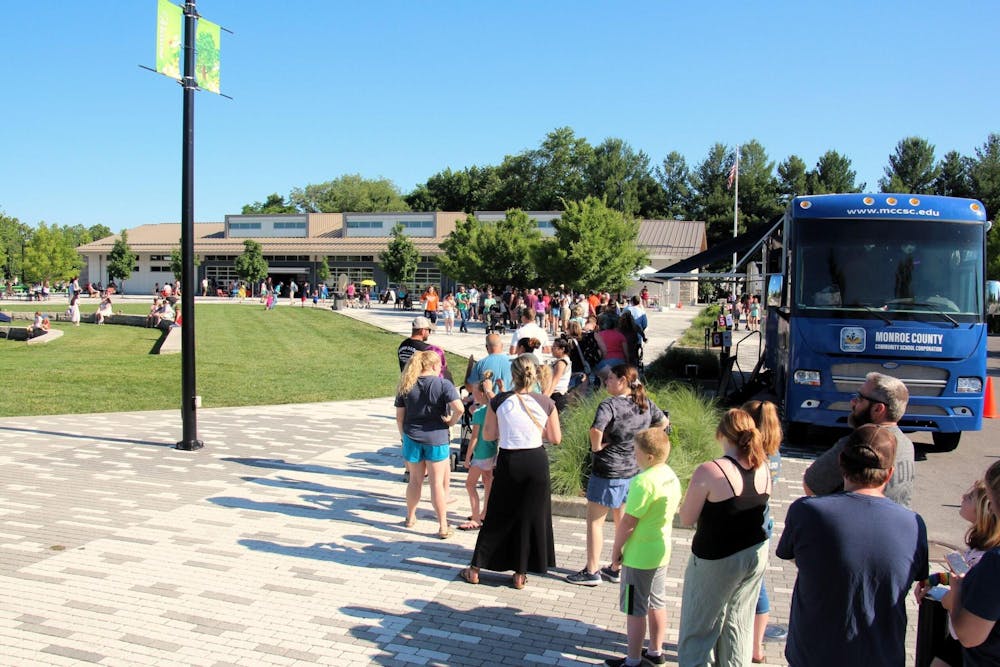Bloomington is installing a new commemorative marker in Switchyard Park that honors African Americans who played a vital role in supporting the city’s Underground Railroad cause.
The Underground Railroad consisted of a secret network of people, safe houses and routes that helped enslaved African Americans escape slavery in the early to mid-19th century. These routes were safe paths in order to gain freedom.
The Indiana State Constitution of 1816 outlawed slavery, which meant African Americans were free to live and work anywhere within the state. According to the City of Bloomington, in the 1860’s through the 1880’s, many African Americans came to Bloomington during the first waves of migration to the North, and Bloomington’s citizens were active participants in the Underground Railroad. The path for escapes in the area ran from Walnut Ridge, south of Bloomington, to Martinsville, Morgantown and Mooresville.
Switchyard Park, located at 1601 S. Rogers St., already has several other signs and art pieces signifying the area’s connection to the Underground Railroad. For instance, one sign indicates that Switchyard Park property once belonged to a conductor in the Underground Railroad.
Desiree DeMolina, communications director for the City of Bloomington, said in an email the city unveiled plans for the marker during its Juneteenth celebration June 15. Julie Ramey, community relations manager for the city parks and recreation department, said in an email her department is actively trying to find the best location to put the sign and have not set a date for the installation yet.
“We are committed to getting the Underground Railroad sign and its message out into the public eye,” Ramey said.
The new sign will help visitors interpret art pieces on the park’s spray pad wall. On one side of the park’s spray pad wall, there is a North Star art installation meant to honor the site's history with the Underground Railroad. The North Star symbolizes a connection to the Underground Railroad because the star was a bright light at night that was used to guide slaves to freedom. The North Star always points toward the true north. Director of the City of Bloomington Parks and Recreation department Tim Street said there is also a piece called the Hoosier Line that represents all of the routes that were once at Switchyard Park.
“Switchyard Park is a really unique spot and a great way to recognize Bloomington’s historic involvement with the Underground Railroad,” Street said. “I hope that this sign brings awareness to a particular part of our town's history that is important that people might not think about in this case.”
Local historian Elizabeth Mitchell collaborated with the Monroe County History Center to develop the sign. Mitchell is a Bloomington resident, historian and a member of the Monroe County Branch NAACP. She said it was her dream to share history with the Bloomington community that has been forgotten or overlooked.
“This marker is for residents and visitors alike so that they know about the shared history of the residents in Monroe County,” Mitchell said.
Mitchell believes the people who aided the Underground Railroad cause were very brave, especially because of the repercussions associated with the 1850 Fugitive Slave Act. This act required law enforcement to arrest people suspected of escaping enslavement and return them to slaveholders, even in states where slavery was illegal. According to the National Constitution Center, any person who provided food or shelter to people escaping slavery were subject to imprisonment and fines. She believes citizens should be proud there were people in Bloomington who participated in helping people to escape slavery. Her ultimate dream is to work hard in order to continue adding more historical signs around the City of Bloomington so that those who were figures in the community would never be forgotten.
“There were women and people of color, it was not just the dominant race saving everyone,” Mitchell said. “We need to recognize everybody that participated in that endeavor because it was dangerous considering you could've been hurt or killed especially after the 1850 Fugitive Slave Act.”




